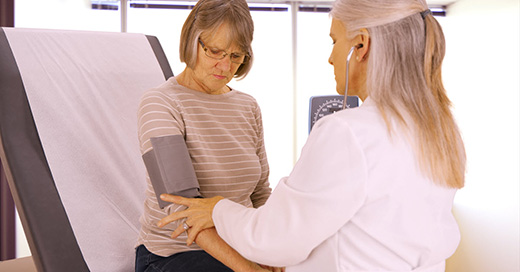By definition, an emergency room visit isn’t something you “plan” in advance. Still, it can help to have some emergency department knowledge ahead of time. With that in mind, here are a few tips and strategies for having the best possible emergency care experience that I picked up during my interview with Thomas Campbell, MD, MPH, the system chairman of emergency medicine for Allegheny Health Network (AHN).
Visiting an emergency room (ER) isn’t anyone’s idea of fun — but avoiding a necessary trip to the emergency department could endanger your health.

Thomas Campbell, MD, MPH, the system chairman of emergency medicine for Allegheny Health Network (AHN).
In many cases, ER fear or avoidance is based on outdated misperceptions. AHN has invested quite a bit in evolving its emergency care, and Dr. Campbell says there’s a national trend to ensure that emergency care experiences are as simple, comfortable, and quick as possible. If your image of an emergency room involves chaotic crowds and long wait times, you may be pleasantly surprised to find that today’s emergency rooms are smartly organized and relatively calm. As for wait times, the national average is about 30 minutes, and AHN has cut its average to around 12 minutes.
Cost is another issue that can dissuade folks from going to an emergency department. If you just have a sore throat, yes, save yourself and the entire health care system some money by using another option (more on that in the next section). However, when you have severe illness or pain, the cost of a trip to the emergency department to get treatment right away will likely be far less than if you put it off and your condition worsens. Also, although walk-in urgent care centers are great for many things, if you go to one with a severe emergency, the first thing they’ll do is call an ambulance to take you to an emergency department. That may leave you on the hook for an urgent care bill, an ambulance ride and the emergency department visit.
Dr. Campbell emphasizes that emergency departments, just like the hospitals in which they operate, are part of the community. There’s no need to be afraid of them — they’re there to take care of the people in the community as quickly and effectively as possible.
Across the entire Highmark Health system, the goal is to get people the right care at the right place at the right time. When issues don’t require the immediate services of an emergency department, your right (and less expensive) choice may be a doctor, urgent care center, or retail clinic. Some hospital systems have programs like AHN’s Same-Day Appointments, which let you set up an appointment in the morning and get medical attention by that afternoon. Dr. Campbell notes that giving people a relatively immediate option like that has helped cut down on unnecessary visits to the ER.
However, he also emphasizes that when in doubt, it is best to go to the ER. He adds that the emergency department isn’t just for the most critical issues like heart attacks and broken bones and severe illness, and he cautions against the mindset that constantly questions whether your pain or sickness “justifies” attention. “If you feel something’s not right and it’s different from what you’re used to, or if a condition is worsening, you should feel comfortable going to an emergency room,” he says. “That’s what we’re here for, and in some communities we may be the only place open at certain hours.”

In an emergency situation, your electronic health record can help emergency care professionals treat you quickly and effectively. If you’re an AHN patient, you can access and update your own electronic health record through MyChart.
For patients and emergency department staff, efficiency is the name of the game. You want to be seen as quickly as possible — and doctors and nurses want to make sure each patient gets the care they need promptly. One thing you can do to help is have your medical history ready.
In the old days, that may have meant keeping a folder with your medical files or creating a list with basic contact information, any allergies or medications, and other aspects of your medical history. Of course, grabbing such a folder may not be in the forefront of your mind when experiencing an emergency, and conditions requiring emergency care may also impact your ability to remember or communicate such information.
Fortunately, many health care systems have made it relatively easy to track and update your medical information through electronic health records. If you’ve been a patient at AHN, for example, you can sign up to get access to MyChart, which keeps your medical information, prescriptions, patient history, contact information, and other details in one safe, convenient file. By doing your part to keep that file up to date, you ensure that if you need to go to an emergency department, doctors and nurses will be able to quickly access the information that will help them treat you effectively.
When you visit an emergency room, it can be frustrating if you’re not seen right away. Dr. Campbell says the important thing to remember is that emergency department staff always see patients in order of severity. It may reduce the frustration, at least a little, to realize that the longer you wait, the luckier you are, because it means your problem is less severe.
Emergency doctors and nurses determine who is seen in what order through a triage process. In many emergency departments, a triage area or desk is the first stop when you enter. That’s where doctors or nurses assess your condition and determine how quickly you need to be seen. To keep those assessments as objective as possible, hospitals like those that are part of AHN use the Emergency Severity Index (ESI) and go through associated trainings. Again, if your ESI ranking is low, and you’re not seen right away, remember that’s probably good news in terms of your health.

In most emergency departments, the first step is to assess the severity of your condition so that patients with the most urgent needs can be treated as quickly as possible.
Health decisions, including when to go to the ER versus when to go to an urgent care facility or make a doctor’s appointment, can be confusing and scary. That’s one reason Highmark provides its health plan members with Blues on Call, a 24-hour hotline that allows you to reach trained health professionals who can help with a range of questions.
It’s understandable if you hope to never have to visit an emergency department, but it’s a rare life that doesn’t include at least a few ER trips, both for yourself and to help family or friends. Having the right information and expectations can help you see how the emergency department is an important part of your community’s health care system, and take full advantage of it when you or a loved one needs it.